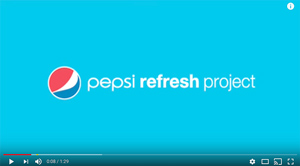
It never ceases to amaze me how many startup and small business owners continue to believe the – mostly online – bovine excrement regurgitated by so-called ‘experts’ about how they should be marketing their business.
As a marketer I see part of my job as keeping up with trends, ideas, and technologies. But when I read the same old tips and tricks spouted as fact by 1001 so-called experts, gurus, and mavens about how to “Supercharge Your Marketing In 10 Easy Steps“, how “[Whatever Marketing Tactic] Is Dead“, or “How Doing This One Thing Will Rocket Your Business Revenue“, I get annoyed.
I get annoyed because I know there are small business owners out there reading that nonsense, and believing it. That there are startups throwing their own (or borrowed) money at that stuff, hoping and praying that it’s going to work. That there are people out there who’ve wasted money on Today’s Big Marketing Trend when, in truth, it’s nothing more than a recycled article from someone else, based on the same useless idea and flawed argument.
People have an incredibly misguided and naïve notion that if a self-appointed marketing ‘expert’ says XYZ Idea works, it’s going to work for them. The fact is, nine times out of ten, it won’t. Every business is different, so every startup or small business marketing plan is different – or at least it should be.
Just Because It’s Old, Doesn’t Mean It’s Outdated
“Your marketing should always be evolving. Whatever your industry, I’ll wager it’s continually changing. The competition is continually changing. Your product or service (should be) continually changing. Your customers – and their expectations – are continually changing. If you’re doing the same old nonsense that you’ve always been doing and still not getting results, it’s not their fault – it’s yours.”
All that may be true. But that doesn’t mean “the old ways” no longer work. For example, most people would agree that email marketing is a powerful messaging tool. But you know what else can work really well? Direct mail. That’s right – printed postcards, letters, or flyers that you send out by snail mail. In fact, there’s evidence that shows response rates from direct mail are often higher than those from email.
What has changed, however, is the way campaigns are conceived, created, and deployed. Not only in terms of content relevance and resonance; but in how campaigns can be multi-layered and deployed across multiple channels according to audience expectation.
Marketing Is About Testing And Iterating. Not Copying And Pasting
Copying what’s worked for XYZ company rarely works. Why? Because you’re not them. Different businesses need different marketing. There’s no such thing as one size fits all.
Marketing is a set of processes, yes. But those processes are crafted, developed, and tweaked for a particular company, audience, product and/or service. The tools, channels, and tactics deployed aren’t transferable: they’re unique to that particular business. Aping what another company is doing won’t gel with audience perception of your product or service.
There, I said it.
“What!”, I hear you say. “Are you crazy?” Not at all – just look at the numbers.
Social media channels offer a great way for organizations to interact with prospects and customers. But what works when it’s people talking to people doesn’t work when brands try talking to people.
“Not true!”, you say. “My social media followers love my content!” OK, so you’re posting a bunch of links that generate feedback – replies, likes, favorites, retweets, whatever. That’s great – well done. Now tell me how many of those people are actually buying from you?
Maybe you’re not getting any positive interaction on feedback from your social efforts. In which case: why on earth are you still doing it? Even worse are all those pre-scheduled Tweets and Facebook updates (that no-one sees) to be sent while you’re not around or auto DM-ing followers about your eBook download is just spam by another name.
I’ve lost count of the number of small businesses who come to us thinking they have to be on social media because that’s what such-and-such marketing article told them they need to do. What happens? They waste time posting updates (or paying others to do it) without seeing a tangible result. The only reason to deploy any marketing tactic should be to generate sales. Compare the time and cost of any sales directly attributable to social media with sales generated from other marketing initiatives – the results speak for themselves.
Don’t believe me? OK, here’s an example. A few years ago Pepsi decided they were going to cancel their annual $20m US Superbowl television advertising campaign. Their agency came to the conclusion that the hip youth of the day weren’t into watching TV ads during the country’s biggest yearly sporting event.
Instead, Pepsi came up with something called the Pepsi Refresh Project.
The idea was you’d use social media channels to suggest suitable ideas for projects that deliver positive social impact in some way. People would vote for their favorite on Facebook, Twitter, and YouTube, and the winners would have their idea funded by Pepsi.
The Pepsi Refresh Project received loads of media attention and attracted a ton of likes, retweets, and followers. But do you know what it didn’t attract? Sales. Pepsi lost more than 5% market share that year, dropping to the #3 spot in the cola wars for the first time ever. No surprise when they decided to come back to the Superbowl the following year.
Pepsi learned the hard way that there is no correlation between ‘likes’ and sales.
Please don’t think I’m against social media, because I’m not. I don’t mean to imply that social isn’t important for businesses. Yes, brands can extract immense value from social channels. But the commercial return for businesses on social is nowhere near as much as you’ve been told. What I’m saying is that spending an hour every day simply posting website links isn’t going to bring home the bacon – no matter what anyone says.
The only way to generate regular and consistent sales leads for businesses using social media channels is via ADVERTISING. Yes, good old-fashioned ads. If you’ve got a small business marketing budget of $500/month and need to generate sales fast, the best bang for your buck isn’t by Tweeting for all you’re worth, Snapchatting until your fingers bleed, or Instagramming 27 times a day. The best (digital) sales ROI you can get for that amount of money is spending it on Facebook/Instagram/Google ads – no question.
Your Marketing Should Be About Knowing Your Audience

Not sexy. But it works.
Design trends – flat design, material design, video headers on websites. Yes, they can look cool. But they can also make your site look like everyone else’s. Unless your website is designed to be little more than a glorified online brochure to please the CEO (i.e. not a sales tool) then your site needs to echo the expectations of your audience – your customers.
From any purely design-based reasoning, Amazon’s website should be an utter failure. Don’t you think the world’s largest retailer would have tested other site designs? Of course they have – and the current visual affront is still the best converting site design they’ve found. It’s not sexy. But it works. Marketing for a startup or small business is no different.
The only people your marketing needs to please are your customers.
New fads in design and technology may generate headlines, but they’re a waste of time if they don’t generate leads. What’s the point of using QR codes, iBeacons, or chatbots if your customers don’t care about them? Advertising a product on a niche social network popular with under 25s isn’t going to bring you results if your audience is the over 65s – no matter what any currently popular ’marketing guru’ tells you.
What Works In The USA Doesn’t Necessarily Work Elsewhere
This is a pet soapbox subject of mine. For whatever reason, the vast majority of the self-proclaimed marketing gurus come from North America, in particular the USA. As a consequence, much of their reasoning about customer behavior is based on the way people in the USA think, feel, and react to stimuli.
But not only is global commerce much more than just North America. People react differently depending on national, cultural, and socio-economic bias.
Cultural differences go far deeper than choice of typeface or whether to feature customer testimonials. Buyer language positioning differs across countries, cultures, and even territories. Some countries expect businesses to adopt a more authoritarian, forthright, and assertive tone of voice. Other countries are open to a more conversational approach. The color red has strong implications to many Chinese audiences, for example, as does the color black in Japan. More info here.
But it’s more than just color schemes or sales text. Are you familiar with Jab Jab Jab, Right Hook? The idea is you give out valuable content/information freely x number of times, so that when you ask your audience for something in return they’ll reciprocate in some way. Now, that may well work in New Jersey or New Orleans. But you’re going to struggle with such an approach if your audience is in Marseille, Milan, or Malaga, for example.
Do What’s Right, Not What’s Fashionable
- Using the word “passionate“. If you have to say it, then you’re not.
- Asking me to tweet about your dog breeding infographic, when I don’t know you and don’t have an interest in the subject? Dream on.
- Emailing me about guest posting on this blog, when if you spent just 5 minutes checking you’d know that we don’t offer guest posts? Fail.
- Putting me on an email list when I didn’t specifically sign up to receive it? You’ve lost my respect.
Beware of marketing tactics, tips, and tricks that continue to be spread as being factual. It’s not just the fact that none of these things will work for your business and consume your time, energy, and money. More importantly they prevent you implementing real marketing initiatives, proven to make a direct positive impact on company bottom-line.
You’re seduced by the other stuff because it’s easier than taking the time to understand your customers. You don’t know their goals, their aspirations, their interests, their fears, their preferences, their dislikes, their vulnerabilities. You’re looking for a quick fix.
You’re doing this stuff because you’re lazy. And your customers know it.
Recent articles:
Dark Social: The Hidden Conversations Marketers Can’t See

Marketing In A Recession: How To Weather The Storm

How To Convince A Marketing Skeptic

Privacy Protection: Why Ad Tracking Must End

Marketing Isn’t About Being Brave: It’s About Being Effective

Why Seeking Consensus Prevents Business Innovation


